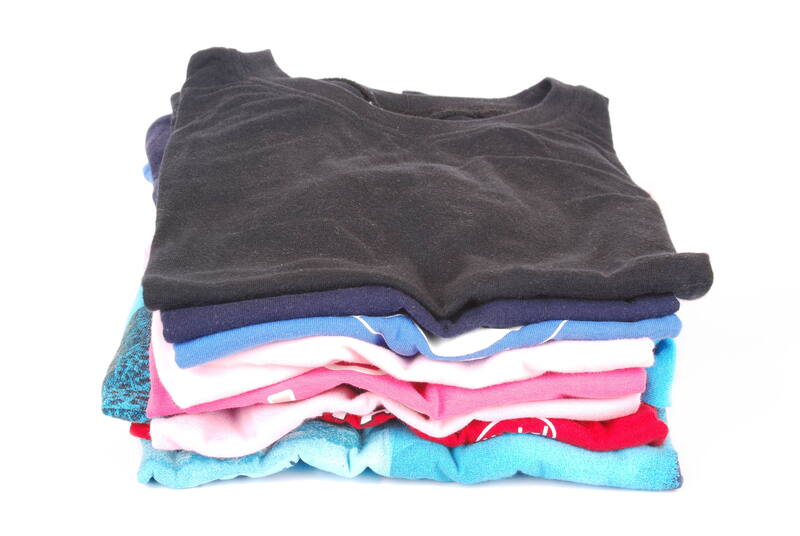Keeping Your Community Clean with Proper PPE Waste Practices
As our reliance on Personal Protective Equipment (PPE) continues, so does the responsibility to dispose of it properly. Improper PPE waste disposal can have devastating consequences for both public health and the environment. Adopting the right PPE waste practices isn't just good citizenship -- it's essential for a cleaner, healthier community.

Table of Contents
- Why PPE Waste Management Matters
- Understanding the Types of PPE
- Best Practices for Disposing of PPE Waste
- The Role of Communities in PPE Waste Management
- Innovative Solutions for PPE Waste
- Educating the Community on PPE Waste Disposal
- Conclusion
Why Proper PPE Waste Management Matters
Throughout recent years, the use of personal protective equipment (PPE) such as masks, gloves, and face shields has surged worldwide. While this equipment is crucial for public safety, its disposal has created new challenges. The improper disposal of PPE can:
- Spread infectious diseases: Contaminated PPE can directly contribute to the transmission of viruses and bacteria.
- Pollute our environment: Non-biodegradable PPE, when littered, contributes to land and marine pollution.
- Harm wildlife: Animals may ingest or become entangled in improperly disposed masks and gloves.
- Block water systems: Clogged drains and waterways due to PPE waste can cause urban flooding and sanitation issues.
These reasons highlight the importance of following effective PPE waste practices to safeguard our communities and ecosystems.
Understanding the Types of PPE Commonly Discarded
To develop comprehensive PPE waste practices, it's important to recognize the main types of disposable PPE and their material make-up:
- Masks: Disposable face masks are generally made of spun plastic fibers such as polypropylene, making them difficult to biodegrade.
- Gloves: Most single-use gloves are crafted from latex, nitrile, or vinyl.
- Face shields or visors: Often made from hard plastics for protection.
- Shoe covers and gowns: Common in healthcare and made from plastics and nonwoven fabrics.
Each type requires specific disposal protocols, and being aware of these differences ensures proper PPE waste management.
Best Practices for Disposing of PPE Waste
Practicing responsible PPE waste disposal not only protects public health but also preserves our environment. Below are crucial steps to make your PPE waste handling effective and safe:
1. Separate PPE from Recyclables
- Disposable PPE, like masks and gloves, should never be mixed with recyclable waste as it contaminates recycling streams and puts workers at risk.
- Designate a specific bin marked "PPE Waste Only."
2. Use Proper PPE Waste Bins
- Place sturdy, lined bins in accessible, high-traffic locations like entrances, exits, and near public transport.
- Always use a bin with a lid to prevent the spread of germs and discourage animals from rummaging.
3. Safely Remove and Bag PPE
- Take care not to touch your face when removing PPE. Use hand sanitizer afterward.
- Seal used PPE in a plastic or biodegradable bag before placing it in the waste bin to prevent leaks or accidental contacts.
4. Avoid Littering
- Never throw PPE on the ground or into waterways.
- If there's no waste bin nearby, carry a small bag with you for temporary storage until it can be disposed of properly.
5. Follow Local Guidelines
- Check with your municipality for specific instructions. Some areas have dedicated PPE waste collection and processing facilities.
- Failure to comply may result in penalties or fines.
6. Encourage Businesses to Provide PPE Disposal Options
- Workplaces and public facilities should offer clear signage and conveniently placed bins for PPE waste.
- Regularly empty and disinfect bins, especially in busy locations.
The Role of Community Participation in PPE Waste Management
Community involvement is pivotal to any successful PPE waste disposal strategy. Here's how local groups can make a difference:
- Neighborhood Cleanups: Organize PPE-focused litter collection drives to remove discarded masks and gloves from public spaces.
- Awareness Campaigns: Host educational events, distribute flyers, and use social media to highlight proper PPE waste disposal techniques.
- School Programs: Teach students about the environmental impact of PPE litter and encourage responsible habits at a young age.
- Support Policy-Making: Advocate for better waste management policies and funding for infrastructure improvements.
By building a culture of responsibility and shared action, communities can drastically reduce improper PPE waste and its negative impacts.
Innovative Solutions for PPE Waste and the Future
As the volume of PPE waste grows, innovative solutions and green initiatives are emerging to address the challenge:
- Recycling Programs: Some cities and private companies now offer specialized recycling for single-use masks and gloves, turning them into construction materials or energy.
- Biodegradable PPE: New research is creating eco-friendly, compostable masks and gloves that break down safely in the environment.
- Advanced Incineration: Modern incinerators use high temperatures to safely destroy contaminated PPE and generate energy with minimal pollution.
- Product Take-Back: Certain PPE manufacturers provide return programs to ensure safe and responsible end-of-life treatment.
These solutions, combined with effective community action, can make a measurable difference in keeping our neighborhoods clean.
Educating the Community on Proper PPE Waste Disposal
Education remains the most effective tool for sustainable PPE waste management. Equip your neighbors and business owners with the knowledge and tools they need:
- Informative Signage: Place clear instructions at strategic locations, showing people how to dispose of PPE correctly.
- Workshops and Seminars: Host community events focused on environmental stewardship and public health.
- Collaborate with Local Media: Use radio, TV, and newspapers to reach broader audiences with key messages.
- Utilize Social Media: Share tips and guidelines online to encourage digital engagement, especially among younger residents.
A well-informed community is empowered to maintain safe, clean streets free from PPE pollution!
Extra Tips for Keeping Your Area PPE Waste-Free
- Carry a spare bag: Always have a small, sealable bag to store used PPE when you're on the go.
- Disinfect: Clean your hands thoroughly after handling used PPE, even if it's just being tossed in a bin.
- Volunteer: Join or start a local PPE waste awareness initiative in your community.
- Report litter: Inform local authorities if you notice regular PPE littering hotspots.
- Lead by example: Teach friends, family, and coworkers about the importance of proper PPE waste practices.

The Importance of Adhering to PPE Waste Guidelines
Disposing of PPE in the right way isn't just about appearances. It's about health, safety, and environmental responsibility. Non-compliance can lead to:
- Increased disease transmission within communities, especially among essential workers who handle waste.
- Legal penalties for businesses or individuals found mishandling hazardous waste.
- Environmental degradation, harming plant and animal life and contaminating waterways.
By committing to proper PPE waste disposal, we all play a part in making our surroundings cleaner, safer, and more pleasant.
Conclusion: A Cleaner Future Starts Today
The challenge of PPE waste is an ongoing one, but together, we can create cleaner and safer communities. Implementing correct PPE disposal practices is not only a matter of hygiene -- it's a civic duty toward your neighbors and the planet. From separating waste at source to advocating for better educational initiatives, every action counts.
Make the commitment today: always use appropriate PPE disposal methods, educate those around you, and support innovative solutions that move us closer to a future free from PPE litter.
Together, let's keep our communities clean with responsible PPE waste practices, ensuring a healthier world for everyone.